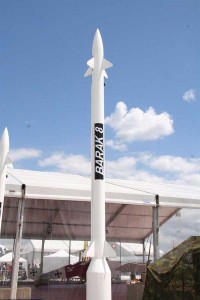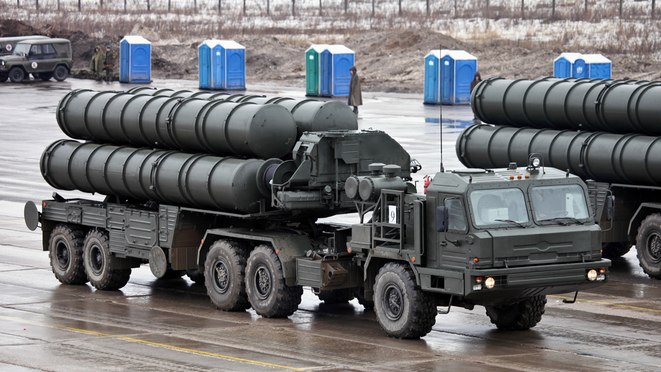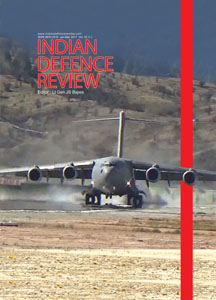Need for a Missile-Based Destructive Air Defence System
For the present, our ground-based air defence system is largely a deterrent force, with minimal resources to effectively protect our airspace as well as critical assets. We need to create a weapon mix, multi-tiered, ground-based, destructive air defence system, which will be able:
There have instances of an overwhelming employment of the air power to decimate the enemy…
• To counter the emerging aerial threats of the 21st century for the next four to five decades.
• To protect all ground-based critical assets, to which threat has been appreciated, located anywhere in the country including some of the coastal assets as well as Tactical Battle Space and Assault Formations undertaking offensive in the enemy territory.
• To effectively relieve the IAF of air defence duties and depending on the battle situations, which preclude any potential conflict situations, to completely sanitise a given segment of the airspace of any enemy air activity e.g. over the Tactical Battle Area.
The above mentioned multi-tiered, destructive, ground-based air defence system will need a number of different types of weapons arrayed in a capability-based air defence architecture, which will protect our national air space, in co-ordination with the IAF as specified or whenever an opportunity arises and protect our critical assets when faced with a very intense, modern air threat. This architecture, which also defines the role of any given weapons system, will comprise the following:
- Long Range Air Defence Missiles with range greater than 100 km.
- Medium Range Air Defence Missiles with range up to 60 km.
- Short Range Air Defence Missiles with range up to 30 km.
- Close Defence Protection Air Defence Missiles with range up to 10 km.
- Air Defence Guns with range over four km
 An analysis of this architecture would show the primacy of missile systems in the air defence layout because of their obvious advantage of ranges to meet different requirements and their superior destructive capability. That notwithstanding, air defence guns have a very important role in protecting critical assets.
An analysis of this architecture would show the primacy of missile systems in the air defence layout because of their obvious advantage of ranges to meet different requirements and their superior destructive capability. That notwithstanding, air defence guns have a very important role in protecting critical assets.
An important aspect, which will not be analysed in this paper is the Operational Control and Early Warning part of the air defence architecture. Elements which enable the air defence architecture to perform their tasks are:
- A very extensive network of long range radars to detect the threat and alert the air defence system.
- A fully automated data management and communication system, which can collect, collate and evaluate information and disseminate intelligence to create theatre-wide situational awareness and battlefield transparency for prioritisation and nomination of the most appropriate system to counter the threat in near real time.
- An extensive network of fire control radars, which can accept assignment of a target, in real time and effectively direct the weapon systems to engage the target.
A sustained air campaign based solely on aircraft may not happen in the foreseeable future…
Deployment of Ground-Based Air Defence Systems
The deployment of ground-based air defences is centred on the critical assets which need to be protected. A nation is expected to have thousands of critical assets which merit air defence protection. Depending on the threat or significance of the asset, the deployment can be in an array of different weapons in multiple tiers. Each tier is meant to counter a specific threat or a group of threats. The asset may be a point asset such as a radar station, a group of contiguous or an area asset such as an airfield or an urban centre such as a part of the city of New Delhi.
Air Defence Architecture: An Array of Weapon Systems
Airspace as a traverse medium offers infinite options to the airborne vectors to manoeuvre, approach a critical asset and deliver the weapon load in a myriad ways. This unhindered movement of the threat through the airspace creates some deployment imperatives for the ground-based air defence weapons which establish the need for an array of weapons required to protect the assets.
Some peculiar features of the air threat, which warrant presence of a wide spectrum of air defence weaponry to be able to engage the threat, are the Unhindered Approach, Unlimited Manoeuvre Space, Stand–off threats and the possibility of inundation of a given segment of the space. These features need to be explained to establish the requirement of an array of ground-based air defences.
Unhindered Approach
Airspace as a medium of traverse for objects moving through it does not offer any impediments. The threat can approach a critical asset from any direction. Technology also allows modern aerial weapon platforms to fly at very high altitudes or at tree-top heights to avoid detection. This ability of the threat to approach practically from any direction makes it imperative for the air defence system to observe the entire space in their vicinity and be prepared to respond to any identified threat.
Dedicated air defence weapons provide close defence protection to nominated, important critical assets…
Unlimited Manoeuvre Space
The airspace, without any obstacles, also offers nearly unlimited manoeuvre space for the threat to adopt any attack profile, based on its own design configuration, which is most suitable for effective delivery of weapons at the weapon release line.
A ground-based, air defence system, with weapons deployed in suitable configuration or a mix of different types of weapons should be able counter the threat adopting any attack profile well before the delivery of the weapon load in case of aircraft and before any missile or rocket getting into an attack profile.
Stand-off Threat
This threat by modern aircraft, wherein the weapon is delivered a long distance away from the critical asset which is to be attacked, the aircraft follows it for sometime till the target is acquired by the weapon and the aircraft moves away. In this case, there are two threat targets, which must be addressed i.e. the aircraft which is moving away after delivering and guiding the weapon load and the weapon load itself, which may be a missile or a bomb. Presence of long range missiles in the architecture, a new addition, will resolve this problem. Some of the modern air defence missiles with ranges of over 60 km or more will be able to detect all threat objectives, including the aircraft with stand-off weapons, well before they are able to release their weapons.
Inundation
There have instances of an overwhelming employment of the air power to decimate the enemy. But in our part of the world, a sustained air campaign based solely on aircraft may not happen in the foreseeable future. However, with UAS, missiles, rockets and artillery now being part of the threat, the enemy has the ability to inundate the defences for short durations at a given point. An array of weapons, with different capabilities, deployed in a manner to provide all round defence and co-ordinated layouts for contiguous assets, the ground-based air defences should have the ability to engage a number of threats simultaneously.
Missile systems deployed for protection of critical assets should have high kill probability…
Having analysed the imperatives for an array of weapons with different features to counter the threat, there is a need to identify some essential attributes in the weapons, which result in effective engagement of the threat.
Destructive Air Defence
The hit-to-kill ability to destroy the threat or to push it off course is a very important feature of some modern air defence missiles. The weapon system may also carry a warhead, which explodes after the initial penetration enhancing the lethality of the weapon. This capability coupled the ability to engage multiple targets is truly the best form of destructive air defence in the air defence architecture.
Kill Probability
Missile systems deployed for protection of critical assets should have high kill probability, which can be enhanced by a higher rate of fire. A single missile fired against an aerial threat may have a kill probability of 40 to 45 per cent. However two missiles against the same target may enhance the probability to over 95 per cent.
Mobility
For air defence protection to be effective, the weapon must reach the location of the asset to be protected. The weapon system can be static, semi-mobile or self-propelled. Modern air defence weapons, irrespective of their collective size of various components and support equipment, have the ability to reach the threatened location to provide effective protection. Self–propelled missile and gun systems have the ability to provide protection to mechanised elements in the war zone and they keep pace with the progress of operations.
Modern air defence guns are a combination of detection devices, guns and elements for operational control.
Close Defence Protection
Dedicated air defence weapons provide close defence protection to critical assets. Close defence protection can also be in the form of man-portable missiles, self-propelled guns/missiles or only guns. Close support by a gun system is a time-tested method to protect critical assets when everything else fails. Some air defence guns on manual or only the local power control, without any radar guidance, can continue to protect a critical asset even in total jamming of all electronics. Protection by guns in the past was simply firing large quantities of ammunition in the probable path of the aircraft to exploit the possibility of the aircraft flying into exploding ammunition or the pilot deciding not to press home the attack.
Modern air defence guns are a combination of detection devices, guns and elements for operational control. These systems can fire a large number of rounds of smart ammunition with thousands of sub ammunition, which enhance their lethality to a level of being a destructive weapon. Indian air defence inventory has a very large number of 40 mm L/70 guns; over 40 years old and despite efforts to modernise them, will not be much use in a modern battlefield. Guns, identified as the last rung in the air defence architecture, have a very important role in conduct of air defence battle. We need modern air defence guns in thousands to protect our air space and critical assets.
Conclusion
Countering an emerging, modern multi-vector and multi-element air threat will need a modern air force and an equally modern ground-based, air defence system based on modern missiles and guns. Modernisation of ground-based air defence weapons through acquisition/indigenous development, where possible, is long overdue. There is flip-flop about S-400 and Barak-8 is just getting off the drawing boards. For the present, besides some refurbishment of decades old weapons, which may be lots of money down the drain and acquiring the ill-fated Aakash system, there does not appear to be anything on the horizon. Possibly the wait will get longer.






